RADIUM AGE 2022
By:
December 11, 2022
“Long live the Radium Age, which was (at the very least) a good deal less horrific and disquieting than the one we’re in now. Back then, the future possessed an almost mystical glow of strangeness that wasn’t simply terrifying; and while it often promised calamities or even a halfway decent apocalypse, these sudden shifts could potentially open up the world to refreshed and invigorating possibilities.”
— Scott Bradfield, Los Angeles Times (May 16)

Under the direction of HILOBROW’s Josh Glenn, earlier this year the MIT Press launched its RADIUM AGE series of proto-sf reissues from 1900–1935.
In these forgotten classics, sf readers will discover the origins of enduring tropes like robots (berserk or benevolent), tyrannical supermen, dystopias and apocalypses, sinister telepaths, and eco-catastrophes. With new contributions by historians, science journalists, and sf authors, the RADIUM AGE book series recontextualizes the breakthroughs and biases of these proto-sf pioneers, and charts the emergence of a burgeoning literary genre.
RADIUM AGE SERIES UPDATES: 2022 | 2023 | 2024 | 1Q2025 | 2Q2025. FULL SERIES INFO.
Here’s what they’re saying about the series:
“Joshua Glenn’s admirable Radium Age series [is] devoted to early- 20th-century science fiction and fantasy.” — Michael Dirda, Washington Post | “Neglected classics of early 20th-century sci-fi in spiffily designed paperback editions.” — The Financial Times | “New editions of a host of under-discussed classics of the genre.” — Tor.com | “The best proto-science fiction novels and stories from 1900 to 1935.” — The Washington Post. | “Long live the Radium Age.” — Scott Bradfield, Los Angeles Times | “Shows that ‘proto-sf’ was being published much more widely, alongside other kinds of fiction, in a world before it emerged as a genre and became ghettoised.” — BSFA Review. | “A huge effort to help define a new era of science fiction.” — Transfer Orbit | “It’s an attractive crusade. […] Glenn’s project is well suited to providing an organizing principle for an SF reprint line, to the point where I’m a little surprised that I can’t think of other similarly high-profile examples of reprint-as-critical-advocacy. ” — The Los Angeles Review of Books | “An excellent start at showcasing the strange wonders offered by the Radium Age.” — Maximum Shelf
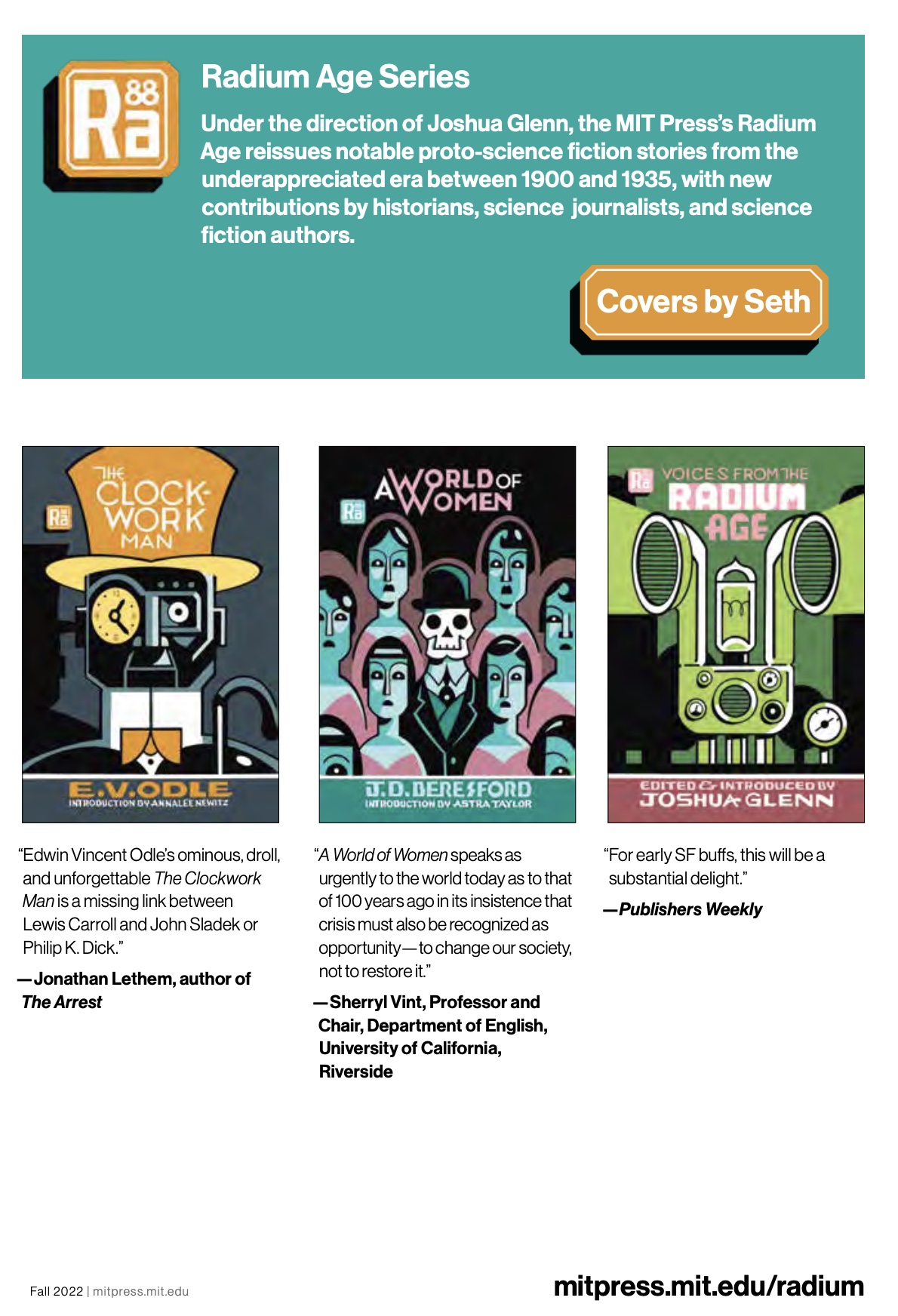
The seven RADIUM AGE series titles listed below are now available in bookstores and elsewhere! Enter code MITPHoliday22 at checkout on PenguinRandomHouse.com’s RADIUM AGE series page for 20% off ALL titles published by the MIT Press, with free shipping until January 31, 2023. Terms and conditions apply.
EDITED BY JOSHUA GLENN
Introduction by JOSHUA GLENN
(March 8, 2022)

This collection of science fiction stories from the early twentieth century features work by the famous (Arthur Conan Doyle, creator of Sherlock Holmes), the no-longer famous (“weird fiction” pioneer William Hope Hodgson), and the should-be-more famous (Bengali feminist Rokeya Sakhawat Hossain). It offers stories by writers known for concerns other than science fiction (W.E.B. Du Bois, author of The Souls of Black Folk) and by writers known only for pulp science fiction (the prolific Neil R. Jones). These stories represent what volume and series editor Joshua Glenn has dubbed “the Radium Age” — the period when science fiction as we know it emerged as a genre. The collection shows that nascent science fiction from this era was prescient, provocative, and well written.
Press for Voices from the Radium Age includes the following…
- “The significance of these seven stimulating early 20th-century tales as what editor Glenn terms ‘proto-sf’ lies in their foreshadowing of the golden age of science fiction, with both famous and obscure authors developing important science fiction tropes still popular today. […] For early SF buffs, this will be a substantial delight.” — Publishers Weekly
- “This first volume is a great launch… Even if you’re just looking for old-school adventure mixed with still trenchant social allegory this is a lineup full of winners. The rest of the series promises to be a just as big a treat and, with cover designs by Guelph artist Seth, they’re nice to look at too.” — Toronto Star
- “Bringing such stories to wider attention is Joshua Glenn’s mission of re-discovery. […] An entertaining survey of the SF of the first third of the twentieth century.” — BSFA (British Science Fiction Association) Review
Stories originally published between 1905 and 1931. Cover designed by Seth. See this book at MIT Press.
J.D. BERESFORD
Introduction by ASTRA TAYLOR
(March 15, 2022)
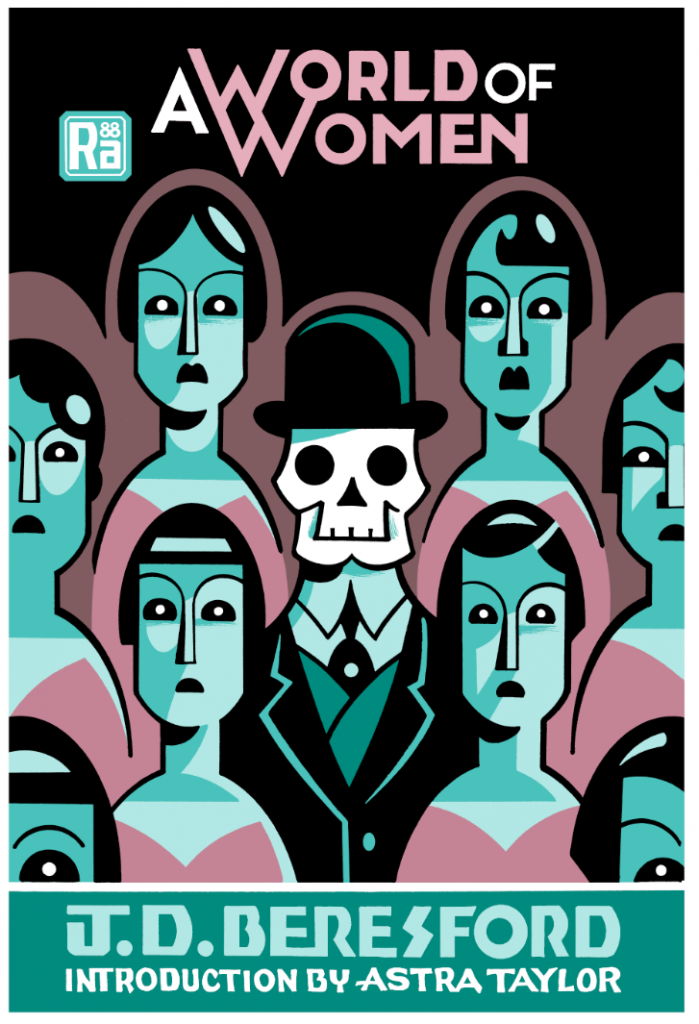
Imagine a plague that brings society to a standstill by killing off most of the men on Earth. The few men who survive descend into lechery and atavism. Meanwhile, a group of women (accompanied by one virtuous male survivor) leave the wreckage of London to start fresh, establishing a communally run agrarian outpost. This is the bleak world imagined in 1913 by English writer J. D. Beresford — one that has particular resonance for the planet’s residents in the 2020s. This edition of A World of Women offers twenty-first century readers a new look at a neglected classic.
“A satire on the lives women lead nowadays and the appalling vanity of modern civilization.” — The Publisher’s Weekly (1913)
“It is a piece of the most vivid imaginative realism, as well as a challenge to our vaunted civilization.” — The Living Age (1916)
“A World of Women speaks as urgently to the world today as to that of 100 years ago in its insistence that crisis must also be recognized as opportunity — to change our society, not to restore it.” — Sherryl Vint, Professor and Chair, Department of English, University of California, Riverside
Press for MITP’s edition of A World of Women includes the following…
- “Insightfully introduced by Astra Taylor, A World of Women opens with a complacent civilization in collapse. The cause? A deadly virus, albeit one that attacks only men. […] Beresford envisions a new society, based on communitarian principles, without the trammels of religion, class and female subservience to men. […] Even a century after its first appearance, A World of Women remains highly readable and still sadly pertinent.” — Michael Dirda, The Washington Post
- “A genuinely interesting SF novel with what was, for the period, particularly original thinking. It’s a real asset to the series.” — Popular Science
- “Particularly relevant right now,” says David V. Barrett, writing in the June issue of Fortean Times about Beresford’s A World of Women. He adds: “Although very much of its day in many of its attitudes and prejudices, the story takes on a surprisingly strong feminist and socialist message.”
- “Beresford’s work, for all its innovations, is embedded in a revulsion of this period towards contemporary society — and a pre-Raphaelite yearning for something simpler. […] In this ill-fated fin de siècle response lies the source of some of the novel’s most antediluvian — and also most utopian impulses. […] MIT’s reprint should allow it a productive critical rediscovery.” — BSFA (British Science Fiction Association) Review
Originally published in 1913. Cover designed by Seth. See this book at MIT Press.
H.G. WELLS
Introduction by SARAH COLE
Afterword by JOSHUA GLENN
(May 3, 2022)

Writing in 1913, on the eve of World War I’s mass slaughter and long before World War II’s mushroom cloud finale, H. G. Wells imagined a war that begins in atomic apocalypse but ends in a utopia of enlightened world government. Set in the 1950s, Wells’s neglected novel The World Set Free describes a conflict so horrific that it actually is the war that ends war.
“A breathless story of great wars of World Powers, of hovering aeroplanes with atomic bombs, and of peace between Kings in a World Council.” — Sinclair Lewis, The Detroit Free Press (1914)
“The color, vigor, and picturesqueness of Mr. Wells’s description of this last war combine to produce an amazing effect.” — The New York Times (1914)
“After writing his pioneering scientific romances, H.G. Wells began a life-long project of writing utopian texts. This sustained and stubborn effort, over forty disastrous years, helped to shape a vision of a better world for those designing the postwar order. The World Set Free is a crucial, stand-out novel in Wells’s amazing effort, and it’s good to see it in a new edition.” — Kim Stanley Robinson, author of The Ministry for the Future
Press for MITP’s edition of A World of Women includes the following…
- “A ground-breaking book in its description of all-out war.” — Popular Science
- “A noble book with big aspirations, and a testament to ‘the radium age.’ Come for the atomic bomb prophecy, stay for the politics of a utopian dream. This is a book that might not have set the world free, but it’ll definitely liberate your imagination for a while, and for that, it’s most certainly worth exploring.” — FanFiAddict
Originally published in 1914. Cover designed by Seth. See this book at MIT Press.
E.V. ODLE
Introduction by ANNALEE NEWITZ
(May 3, 2022)
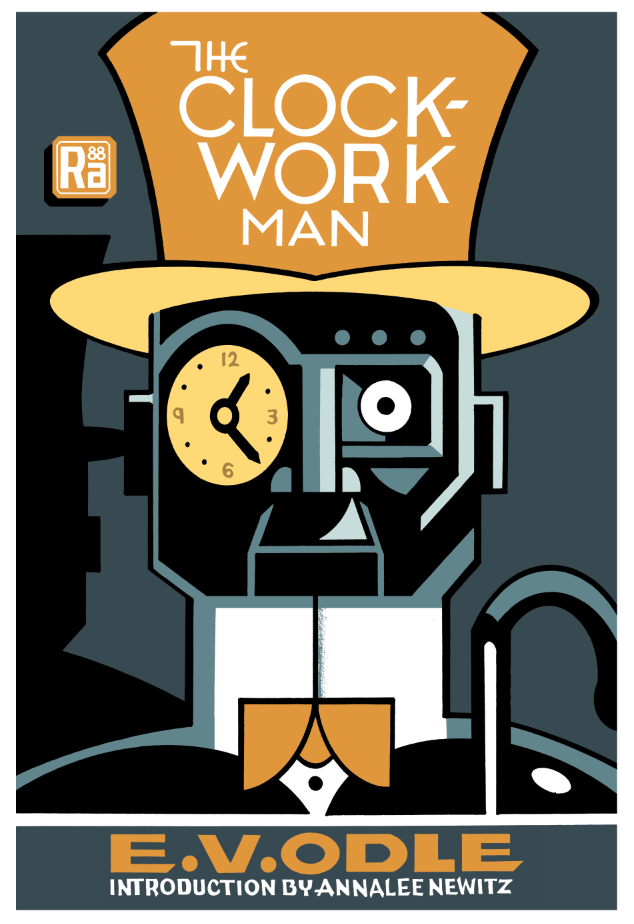
In 1920s England, a strange being crashes a village cricket game. After some glitchy, jerky attempts to communicate, this creature reveals that he is a machine-enhanced human from a multiverse thousands of years in the future. The mechanism implanted in his skull has malfunctioned, sending him tumbling through time onto the green grass of the cricket field. Apparently in the future, at the behest of fed-up women, all men will be controlled by an embedded “clockwork,” camouflaged with hats and wigs. Published in 1923, The Clockwork Man — the first cyborg novel —tells the story of this odd time traveler’s visit.
“It is a striking and original book, and there is a notable sermon in it for those who can dissociate sermons from long faces.” — The Bookman (1923)
“Odle’s ominous, droll, and unforgettable The Clockwork Man is a missing link between Lewis Carroll and John Sladek or Philip K. Dick.” — Jonathan Lethem, author of The Arrest
“Perhaps the outstanding scientific romance of the 1920s.” —Anatomy of Wonder, ed. Neil Barron
Press for MITP’s edition of The Clockwork Man includes the following…
- “An excellent example of the promise of the Radium Age series, giving deserved attention to a hilarious and prescient work of science fiction that has almost been forgotten. Those interested in the preoccupations of science fiction will be amazed to see some of its most familiar and compelling tropes introduced in a book well before the advent of modern computers, while others will find a tremendously entertaining novel with a witty, absurdist bent.” — Maximum Shelf (published by Shelf Awareness)
- “Fluidity versus fixedness as markers of peace versus conflict is a strikingly resonant argument to find in a novel that’s just under a century old, and it more than justifies time spent in the company of The Clockwork Man.” — Los Angeles Review of Books
- “Odle’s novel tells the story of a time traveling cyborg who arrives in the 1920s, deconstructing gender roles along the way.” — Tor.com’s list of Can’t Miss Indie Press Speculative Fiction for May and June 2022
- “This edition features an introduction by io9 co-founder Annalee Newitz, which is worth the price of admission alone.” — Andrew Liptak, Transfer Orbit
- “A charming tale with hidden depths that’ll make you think, laugh, and feel. As a character, the clockwork man is a triumph of the future. As a book, The Clockwork Man is a triumph of the past, preserved in this beautiful edition that is definitely worth taking a trip to rediscover.” — FanFiAddict

Originally published in 1923. Cover designed by Seth. See this book at MIT Press.
J.J. CONNINGTON
Introduction by MATTHEW BATTLES
Afterword by EVAN HEPLER-SMITH
(August 2, 2022)
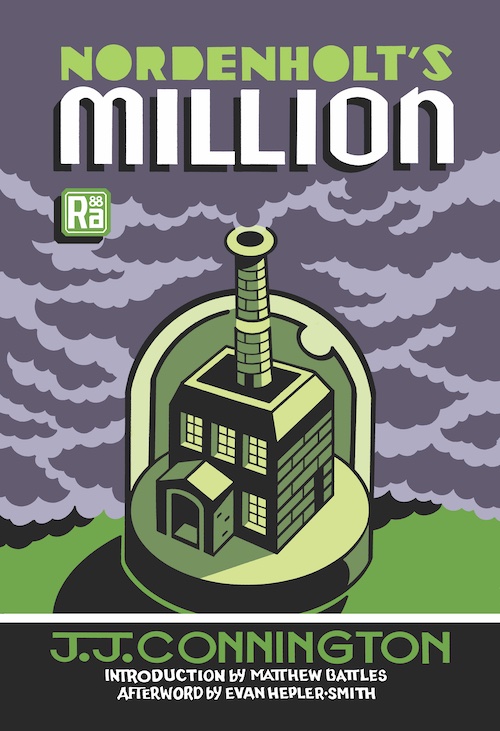
As denitrifying bacteria inimical to plant growth spread around the world, toppling civilizations and threatening to wipe out humankind, the British plutocrat Nordenholt sets himself up as the benignant dictator of a ruthlessly efficient, entirely undemocratic survivalist colony established in Scotland’s Clyde Valley. Discovering just how far their employer is willing to go in his effort to spare one million lives, Jack Flint, the colony’s director of operations, and Elsa Huntingtower, Nordenholt’s personal assistant, are forced to grapple with the question of whether a noble end justifies dastardly means.
“You may like Nordenholt’s Million or you may detest it, but there is one thing I defy you to do, and that is to forget it.” — Punch (1923)
“I can’t think of a more timely moment to reissue Nordenholt’s Million, a chilling prediction of eco-catastrophe and the authoritarian regimes that can and do arise during such periods of chaos.” — Douglas Rushkoff, author of Team Human
Press for MITP’s edition of Nordenholt’s Million includes the following…
- Nordenholt’s Million was featured as “One to Watch” in the w/o May 23 issue of The Bookseller. “As a bacteria threatens mankind, plutocrat Nordenholt creates a survivalist colony in Scotland’s Clyde Valley. This is part of the MIT press Radium Age reissue series, celebrating classic ‘proto-science fiction stories from the underappreciated era between 1900-35’ and, as with all the series, features striking cover art from Canadian comic artist Seth.”
- “Notable for being shaped more by pandemic-adjacent fears than war.” — Los Angeles Review of Books
- “This edition comes with a foreword from Matthew Battles and an afterword from Evan Hepler-Smith. I’ve been particularly looking forward to this installment of the [Radium Age] series.” — Transfer Orbit
Originally published in 1923. Cover designed by Seth. See this book at MIT Press.
PAULINE HOPKINS
Introduction by MINISTER FAUST
(August 2, 2022)
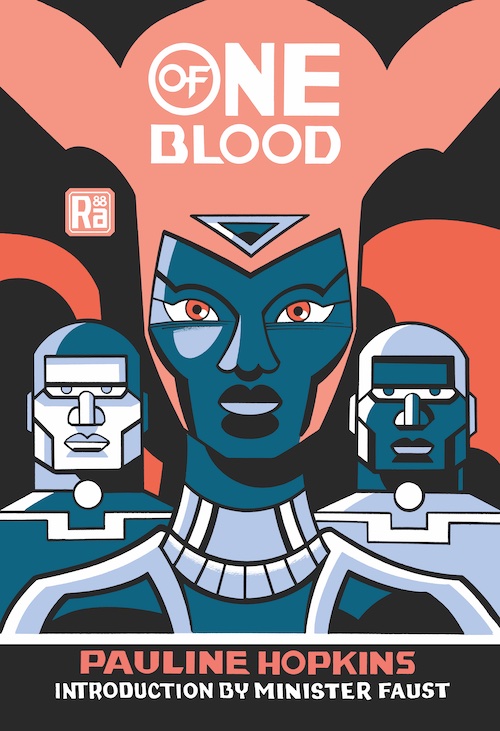
Long before Marvel Comics gave us Black Panther and Wakanda, a high-tech African country that has never been colonized, Reuel Briggs — a white-passing, mixed-race Harvard medical student who stumbles upon Telassar. In this long-hidden Ethiopian city, whose wise and peaceful inhabitants possess both advanced technologies and mystical powers, Reuel discovers the incredible secret of his own birth. Now, he must decide whether to return to the life he’s built and the woman he loves back in America, or to play a role in helping Telassar take its rightful place on the world stage. Considered one of the earliest articulations of Black internationalism, Of One Blood takes as its theme the notion that race is a social construct perpetuated by racists.
“Deals in no uncertain terms with both the temporal and spiritual solution of the greatest question of the age — The Negro.” — The Colored American Magazine (1902)
“Of One Blood returns in this new edition, celebrating a seminal work of Black speculative fiction. Over a century since its original publication, Hopkins’s classic remains as relevant today as ever.” —P. Djèlí Clark, Nebula-winning author of Ring Shout and A Master of Djinn
Press for MITP’s edition of Of One Blood includes the following…
- “An exceptionally entertaining book with a serious subtext… Hopkins longed to dismantle what we now call systemic racism, in part by stressing our common humanity.” — Michael Dirda, Washington Post
- “‘The phenomena are there, lying broadcast over the surface of history. No matter where you open its pages, you find things recorded under the name of divinations, inspirations, demoniacal possessions, apparitions, trances, ecstasies, miraculous healing and productions of disease, and occult powers possessed by peculiar individuals over persons and things in their neighborhood.’ So one Reuel Briggs — a Harvard Medical School student of mixed race — reads and is launched on a trip that leads him to a long-hidden Ethiopian city in Pauline Hopkins’s 1903 novel Of One Blood, that MIT Press has just published as part of its Radium Age series, which reissues ‘proto-science fiction’ from 1900 to 1935.” — Boston Globe
- “A fantastic reminder of the long (generally overlooked, ignored, and under-celebrated) legacy of Black speculative fiction!” — Arley Sorg, coeditor-in-chief of Fantasy and Senior Editor of Locus, via Twitter
- “Hopkins … transports readers to a technologically advanced, hidden city in Ethiopia that’s remained free of colonialist influences and oppression.” — Transfer Orbit
- “The Radium Age imprint continues its work bringing lost genre classics back into the public consciousness, and this August it’ll do so with a new edition of Pauline Hopkins’s Of One Blood. Hopkins’s 1903 novel follows a biracial American who visits an African nation abounding with futuristic technology.” — Tor.com
Originally published in 1902–1903. Cover designed by Seth. See this book at MIT Press.
ROSE MACAULAY
Introduction by MATTHEW DE ABAITUA
(October 4, 2022)
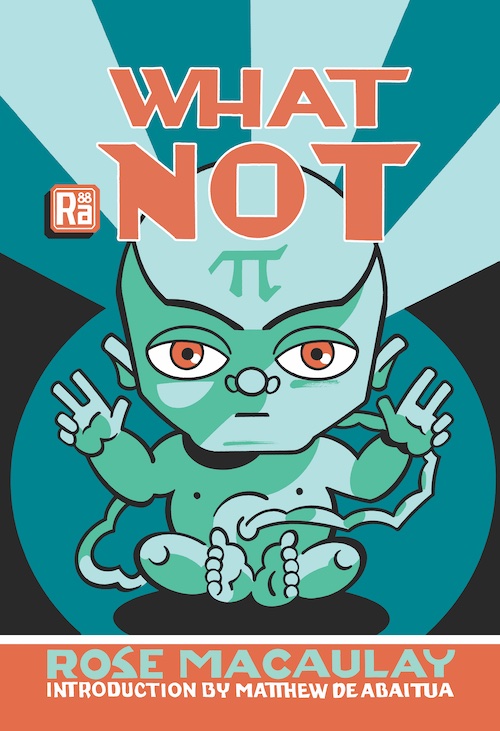
In a near-future England, a new government entity — the Ministry of Brains — attempts to stave off idiocracy through a program of compulsory selective breeding. Kitty Grammont, who shares the author’s own ambivalent attitude to life, gets involved in the Ministry’s propaganda efforts, which are detailed with an entertaining thoroughness. However, when Kitty falls in love with the Minister for Brains, a man whose genetic shortcomings make a union with her impossible, their illicit affair threatens to topple the government. Because it ridiculed wartime bureaucracy, the planned 1918 publication of What Not, whose alphabetical caste system would directly influence Aldous Huxley’s 1932 dystopia Brave New World, was delayed until after the end of World War I.
“Miss Macaulay’s ‘prophetic comedy’ is a joyous rag of Government office routine, flappery, Pelmania, Tribunals, State advertising, the Lower Journalism and ‘What Not.’ …. A very shrewd piece of observation, whimsicality and tempered malice.” — Punch (1919)
“One of the wittiest, most ironical, and altogether funniest books that have appeared these many years.” — The Daily Telegraph (1919)
“A satire of Britain after World War One, where mental improvement has its own powerful government department. A cross between Brave New World and Orwell’s ‘Ministry of Truth’ — all delivered with a sly wit and arch tongue.” — Philippa Levine, Walter Prescott Webb Chair in History and Ideas, University of Texas at Austin.
Press for MITP’s edition of Of One Blood includes the following…
- “An example of a novel written in direct response to its time that remains vital because of that link and not in spite of it.” — Los Angeles Review of Books
Originally published in 1918. Cover designed by Seth. See this book at MIT Press.

RADIUM AGE: TIMELINE: During 2022, Josh wrote a weekly HILOBROW series offering notes towards a comprehensive account of the emerging science fiction genre’s 1900–1935 era. Here’s the complete series:
[1900 | 1901 | 1902 | 1903] | 1904 | 1905 | 1906 | 1907 | 1908 | 1909 | 1910 | 1911 | 1912 | 1913 | 1914 | 1915 | 1916 | 1917 | 1918 | 1919 | 1920 | 1921 | 1922 | 1923 | 1924 | 1925 | 1926 | 1927 | 1928 | 1929 | 1930 | 1931 | 1932 | 1933 | [1934 | 1935].
(The brackets, here, indicate “interregnum” years — i.e., periods of overlap between sf’s Radium Age and its Scientific Romance and so-called Golden Age eras.)
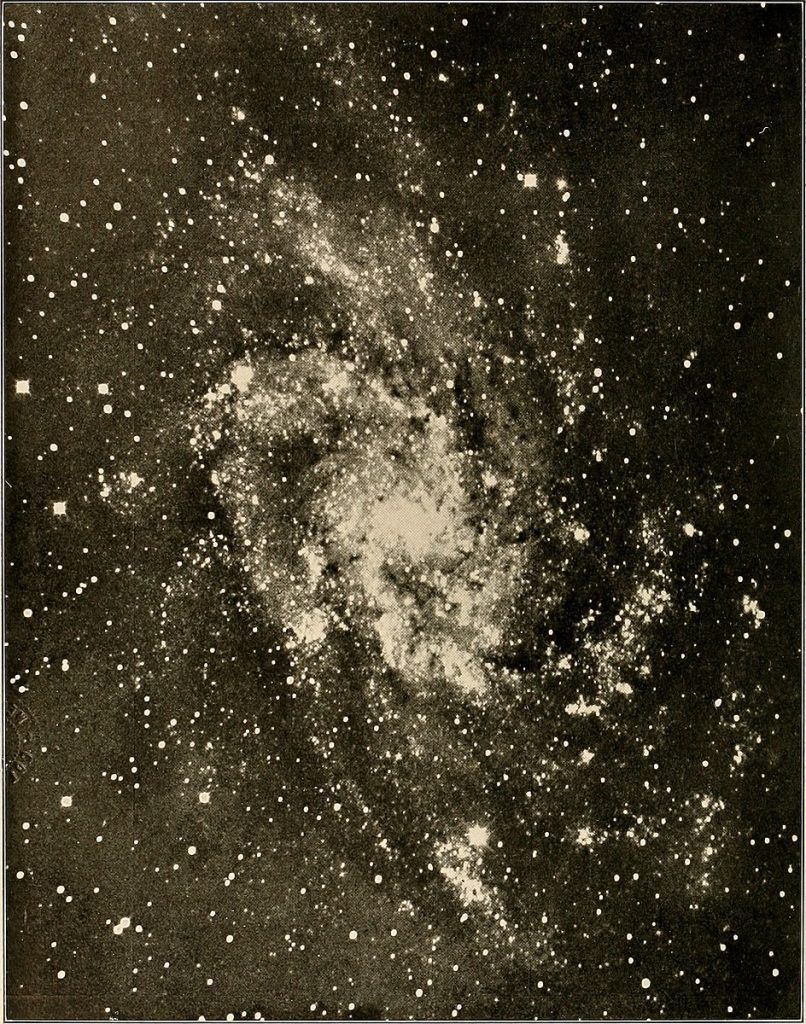
HILOBROW published new installments in the RADIUM AGE POETRY series. Here’s the 2022 lineup:
Rudyard Kipling’s THE SECRET OF THE MACHINES | Randolph Bourne’s SABOTAGE | Stephen Spender’s THE PYLONS | Ford Madox Ford’s GREY MATTER | W.E. Henley’s A SONG OF SPEED | H.L. Mencken’s A BALLAD OF LOOKING | George Sterling’s THE TESTIMONY OF THE SUNS | Vachel Lindsay’s THE SCIENTIFIC ASPIRATION | Thomas Hardy’s EPITAPH FOR G.K. CHESTERTON | Archibald MacLeish’s EINSTEIN | Thomas Thornely’s THE ATOM | Charles M. Doughty’s THE CLIFFS | William Butler Yeats’s THE SECOND COMING | Guillaume Apollinaire’s THE LITTLE CAR | Archibald MacLeish’s MAN! | Max Beerbohm’s A SEQUELULA TO “THE DYNASTS” | C.S. Lewis’s DYMER | Stephen Vincent Benét’s METROPOLITAN NIGHTMARE.
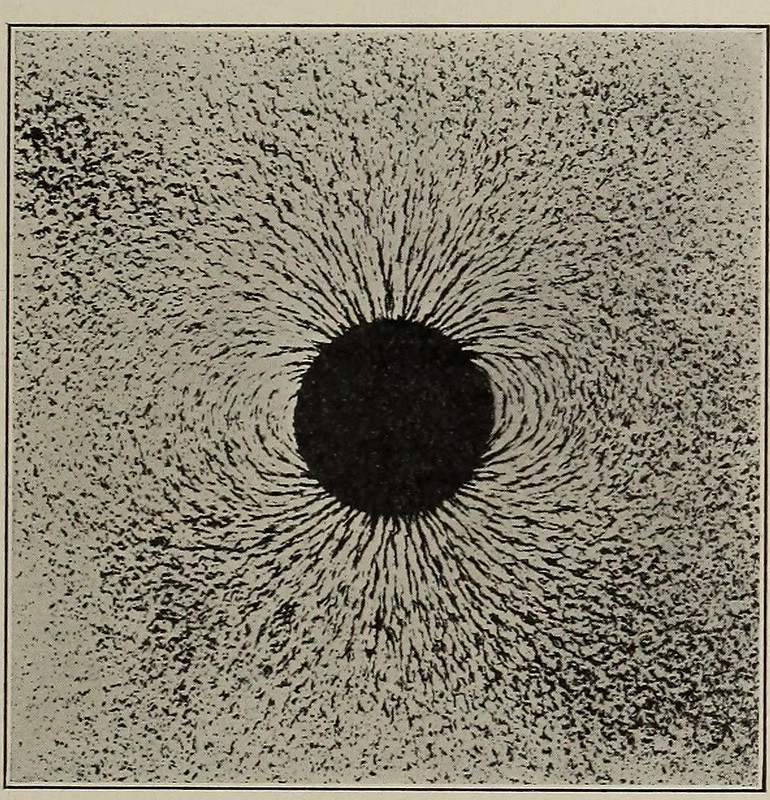
In May, HILOBROW excerpted a Radium Age-adjacent section from Henry Adams’s The Education of Henry Adams.
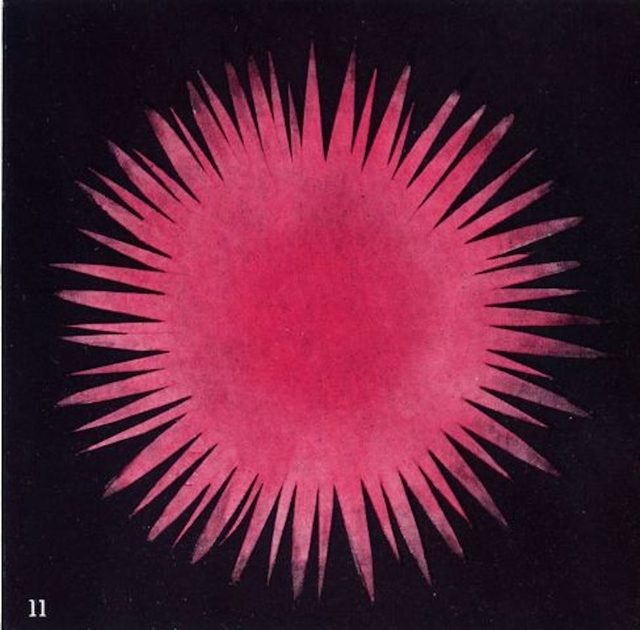
THOUGHT-FORMS, which collects images from Annie Besant and C.W. Leadbeater’s 1901 book Thought-Forms (in which the authors flex their ability to detect the spiritual “vibrations” of ideas, emotions, and sounds as visual forms) was a RADIUM AGE-adjacent series published in 2Q2022.
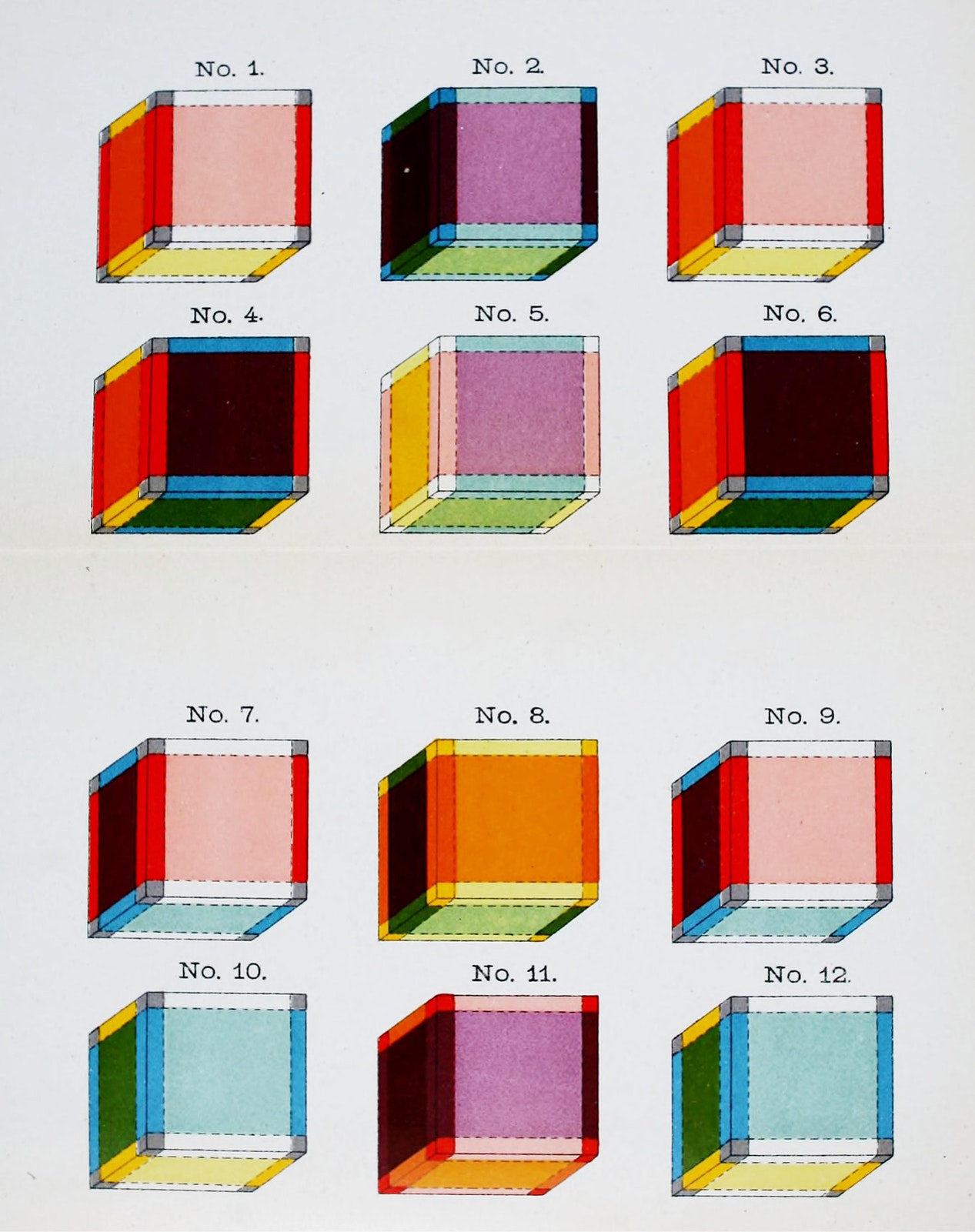
Here at HILOBROW, as we have been doing for a decade now, during 2022 we serialized some of Josh’s favorite Radium Age proto-sf stories and novels. Here’s this year’s lineup:
- We wrapped up our serialization (begun in 2021) of A. Merritt’s The Moon Pool (1919)
- Booth Tarkington’s “The Veiled Feminists of Atlantis” (1926)
- H.G. Wells’s “The Land Ironclads” (1903)
- J.D. Beresford’s The Hampdenshire Wonder (1911)
- Valery Bryusov’s “The Republic of the Southern Cross” (1907)
- Algernon Blackwood’s “A Victim of Higher Space” (1908)
- A. Merritt’s “The People of the Pit” (1918)
- Julian Huxley’s “The Tissue-Culture King” (1926)
- Clare Winger Harris’s “A Runaway World” (1926).
- We began serializing Max Brand’s The Untamed (1919); serialization will continue through mid-2023
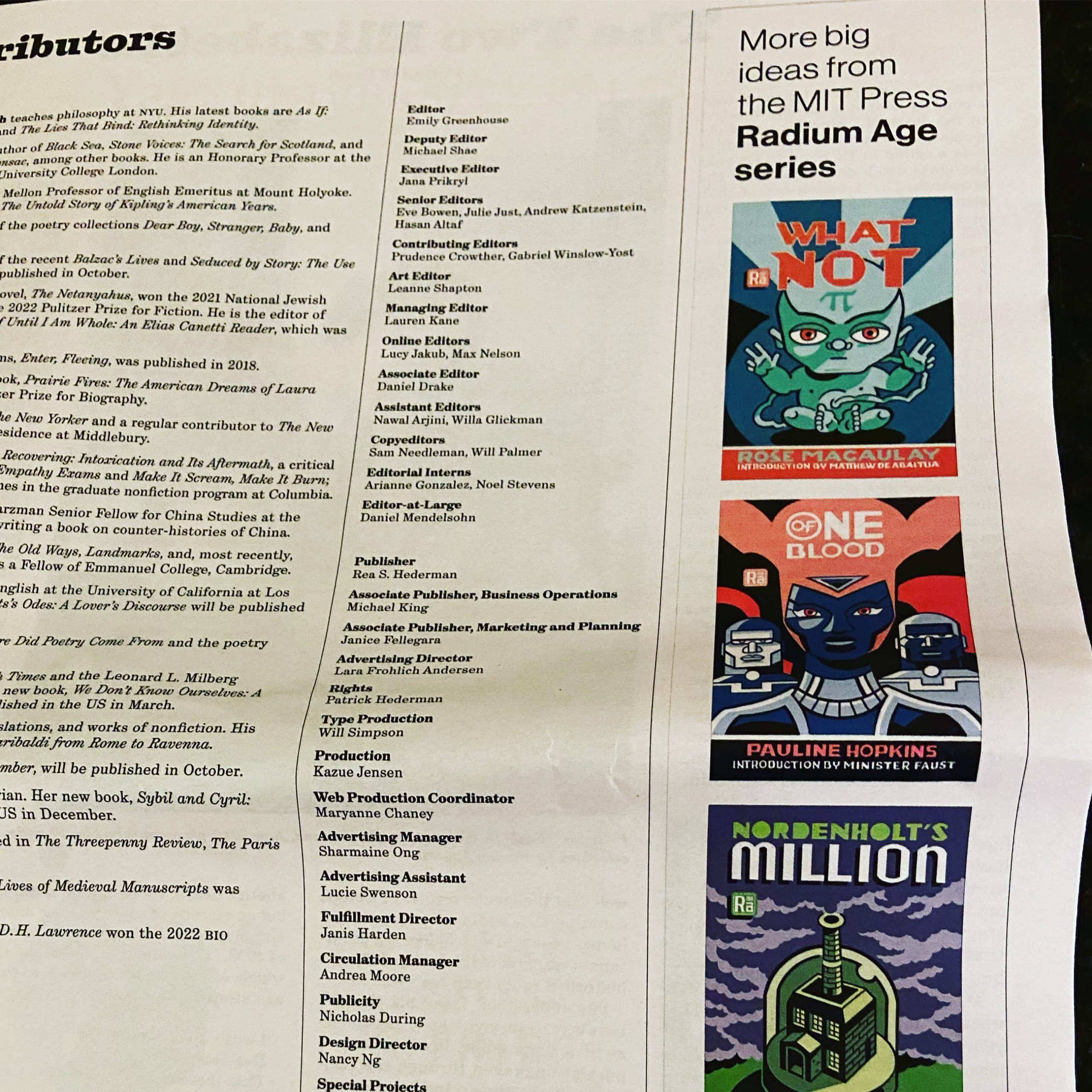
During 2022, the MIT Press took out colorful ads in Harper’s, The New York Review of Books, and elsewhere. The word was spread in other ways, too…
- In December, Khadija Coxon, an editor at McGill Queen’s University Press, was kind enough to send along this photo from an exhibit at Queen’s University, where Special Collections has mounted an exhibit about female proto-sf authors.
- In November, Nordenholt’s Million was entered into a Goodreads giveaway through December 12 — tomorrow! This is an opportunity for readers, librarians, reviewers, and other industry professionals to enter for a chance to win one of ten available finished copies of the book. Winners are then encouraged — though not required — to write a review.
- In September, a JOSHUA GLENN entry showed up in the indispensable sci-fi lit database ISFDB.
- In September, Josh lectured on Radium Age sf to Stephanie Burt’s Harvard class English 182: Science Fiction.
- In August, Josh published RADIUM AGE AI, an essay surveying Radium Age-era depictions (in proto-sf stories and novels) of the pros and cons of artificial intelligence.
- Also in August, Josh recorded an episode of Graham Culbertson’s AI-oriented podcast, AIdeas, “the show about ideas for AI that sit halfway between poetry and mathematics.” The episode aired on August 29th.
- In July, Josh was on a panel of presenters for the Booklist webinar “New Worlds, New Books: Upcoming Fantasy and Adventure Titles.” Booklist is a book-review publication of the American Library Association. You can view it here.
- in June RADIUM AGE series illustrator Seth was honored by the French minister of culture, who named him a Chevalier of the Order of Arts and Letters.
- In May, Josh was interviewed about the series by Hank Stephenson — for MAXIMUM SHELF, a weekly feature for booksellers published by Shelf Awareness.
- In March, Annalee Newitz (who has contributed an Introduction to one of the Spring 2022 Radium Age series titles, and who serves on the series’ panel of advisors) and Josh chatted about MITP’s new series — in a virtual event hosted by Chicago’s Madison Street Books.
- Andrew Liptak of Transfer Orbit dedicated the entire March 8 issue of his sf newsletter to the series. “[Glenn has] made a huge effort to help define a new era of science fiction,” he writes. Excerpt:
The series is designed to shed light on an under-appreciated era of the literature, one that’s largely been ignored or downplayed by genre scholars. Despite that lack of attention, it was an era of radical improvisation and experimentation on the part of the period’s writers, and while many of those works contain inherent flaws of their times, they held plenty of influence for the works and authors that would follow.
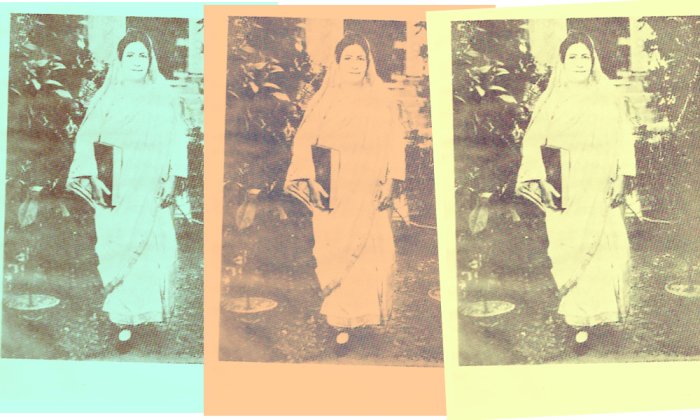
- In March, the MIT Press Reader published Josh’s essay “The Brilliant Vision of Rokeya Sakhawat Hossain’s ‘Sultana’s Dream'”.
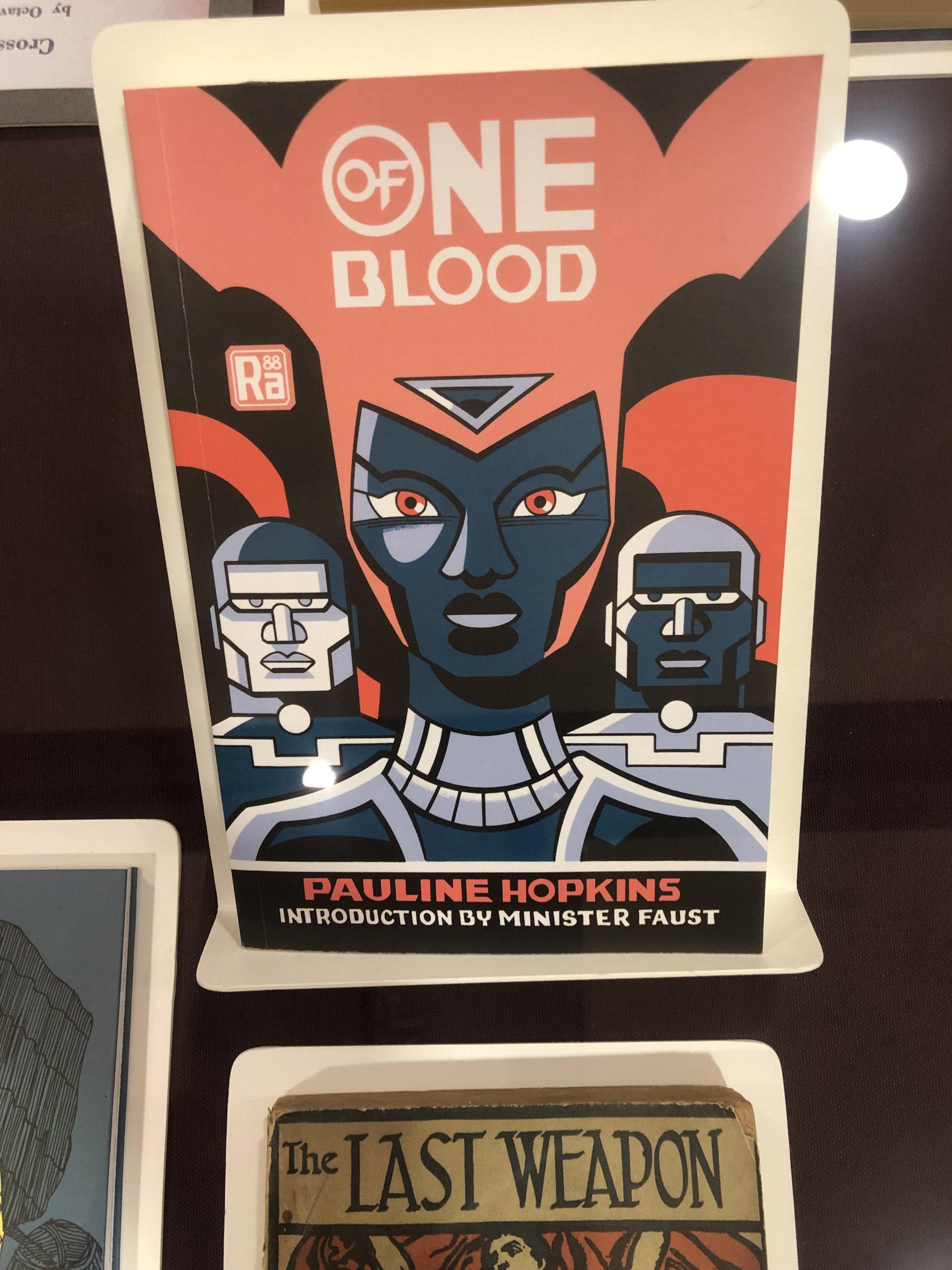

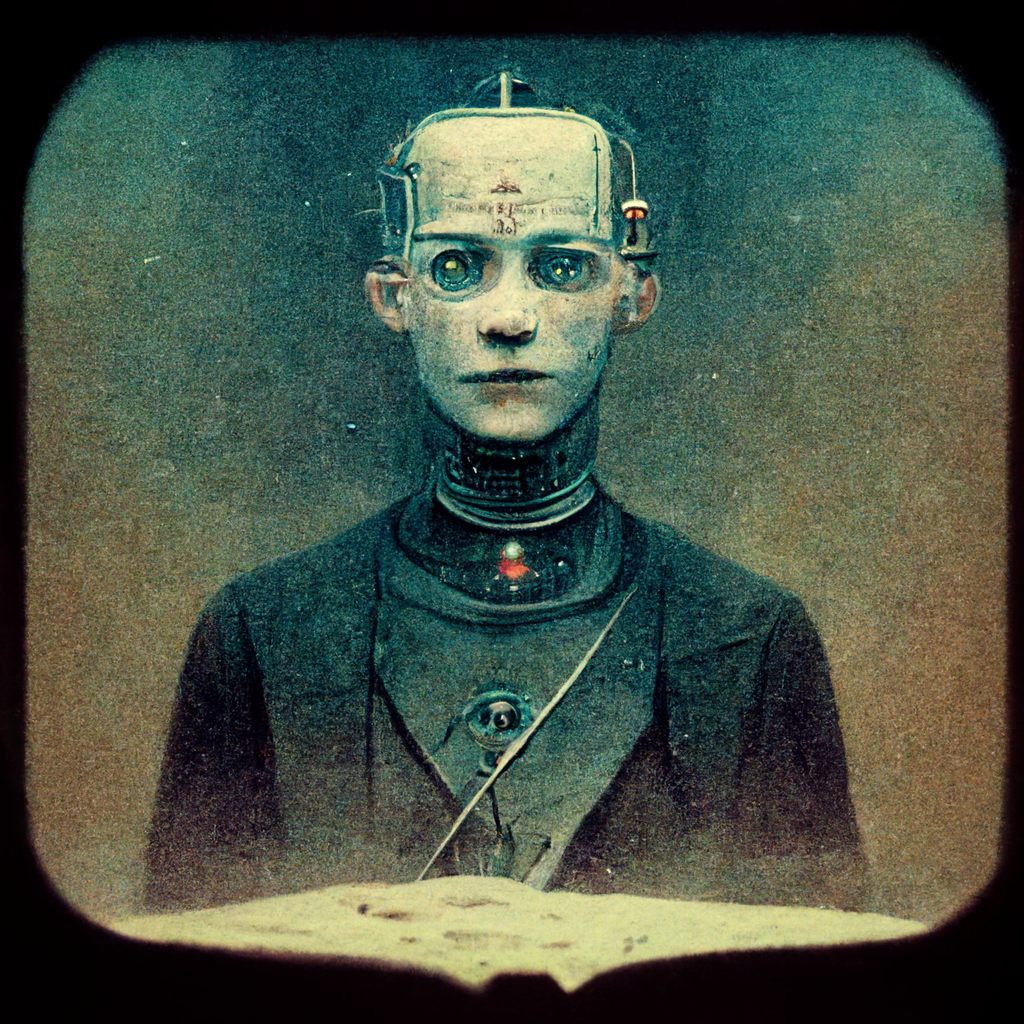


Josh is very grateful to…
- Noah Springer in particular, and his many colleagues at MIT Press — copy editors, proof readers, designers, publicity folks, lawyers, you name it — for their diligent behind-the-scenes efforts
- Annalee Newitz, Matthew Battles, Evan Hepler-Smith, Minister Faust, Astra Taylor, Matthew De Abaitua, and Sarah Cole for their 2022 introductions and afterwords
- P. Djèli Clark, Jonathan Lethem, Douglas Rushkoff, Sherryl Vint, Philippa Levine, and Kim Stanley Robinson for their 2022 back-cover endorsements
- Anindita Banerjee, David M. Higgins, Annalee Newitz, Sherryl Vint, Sean Guynes, Ken Liu, and kara lynch — the RADIUM AGE series advisory panel — for the brainstorming, networking, and feedback
- Conor Reid, Susan R. Grayzel, Madeline Ashby, Erik Davis, Philippa Levine, Lisa Yaszek, Paul March-Russell, Ted Chiang, and S.L. Huang — for their forthcoming intros
- Bodhisattva Chattopadhyay and Jill Roese — for their forthcoming translations and intros
- Seth, for the swell cover designs and illustrations
MORE RADIUM AGE SCI FI ON HILOBROW! RADIUM AGE SERIES from THE MIT PRESS: In-depth info on each book in the series; a sneak peek at what’s coming in the months ahead; the secret identity of the series’ advisory panel; and more. | RADIUM AGE: TIMELINE: Notes on proto-sf publications and related events from 1900–1935. | RADIUM AGE POETRY: Proto-sf and science-related poetry from 1900–1935. | RADIUM AGE 100: A list (now somewhat outdated) of Josh’s 100 favorite proto-sf novels from the genre’s emergent Radium Age | SISTERS OF THE RADIUM AGE: A resource compiled by Lisa Yaszek. HILOBOOKS INTROS: Matthew Battles vs. Jack London’s The Scarlet Plague | Matthew De Abaitua vs. Rudyard Kipling’s With the Night Mail (and “As Easy as A.B.C.”) | Joshua Glenn vs. Arthur Conan Doyle’s The Poison Belt | James Parker vs. H. Rider Haggard’s When the World Shook | Tom Hodgkinson vs. Edward Shanks’s The People of the Ruins | Erik Davis vs. William Hope Hodgson’s The Night Land | Astra Taylor vs. J.D. Beresford’s Goslings | Annalee Newitz vs. E.V. Odle’s The Clockwork Man | Gary Panter vs. Cicely Hamilton’s Theodore Savage | Mark Kingwell vs. Muriel Jaeger’s The Man with Six Senses | Bruce Sterling vs. Rudyard Kipling’s With the Night Mail (Afterword) | Gordon Dahlquist vs. Arthur Conan Doyle’s The Poison Belt (Afterword). IO9.COM ESSAYS: | RADIUM AGE SUPERMEN | RADIUM AGE ROBOTS | RADIUM AGE APOCALYPSES | RADIUM AGE TELEPATHS | RADIUM AGE ECO-CATASTROPHES | RADIUM AGE COVER ART | 1912: SF’S BEST YEAR EVER. ONGOING RESEARCH: THE HIGHBROW VIRUS | BATHYBIUS | WAR AND PEACE GAMES | BEGUM ROKEYA | TWILIGHT | THOUGHT FORMS. RADIUM AGE AUTHORS: | J.D. Beresford | Algernon Blackwood | Edgar Rice Burroughs | Karel Čapek | Buster Crabbe | August Derleth | Arthur Conan Doyle | Hugo Gernsback | Charlotte Perkins Gilman | Cicely Hamilton | Hermann Hesse | William Hope Hodgson | Aldous Huxley | Inez Haynes Irwin | Alfred Jarry | Murray Leinster | Gustave Le Rouge | Gaston Leroux | David Lindsay | Jack London | H.P. Lovecraft | A. Merritt | Maureen O’Sullivan | Sax Rohmer | Paul Scheerbart | Upton Sinclair | Clark Ashton Smith | E.E. “Doc” Smith | Olaf Stapledon | John Taine | H.G. Wells | Jack Williamson | Stanisław Ignacy Witkiewicz | S. Fowler Wright | Philip Gordon Wylie | Yevgeny Zamyatin.

